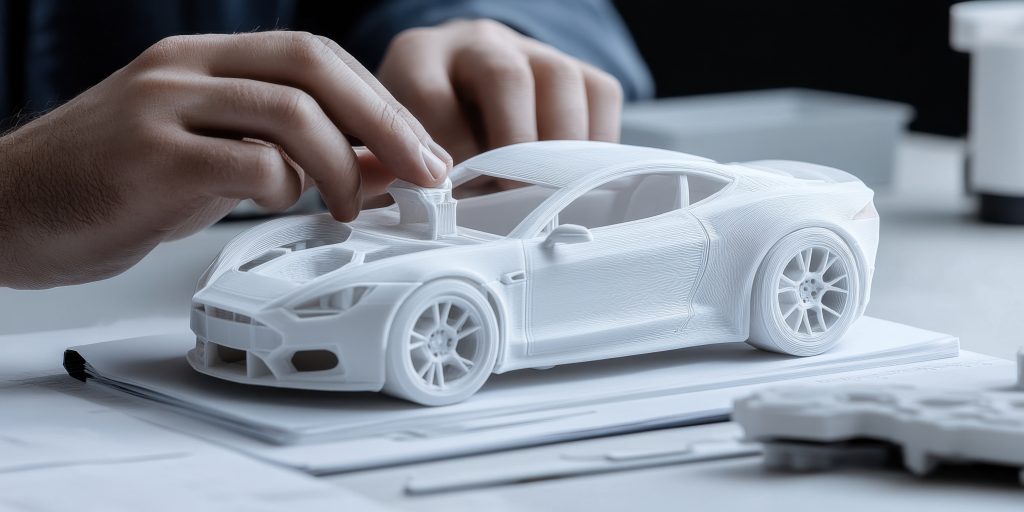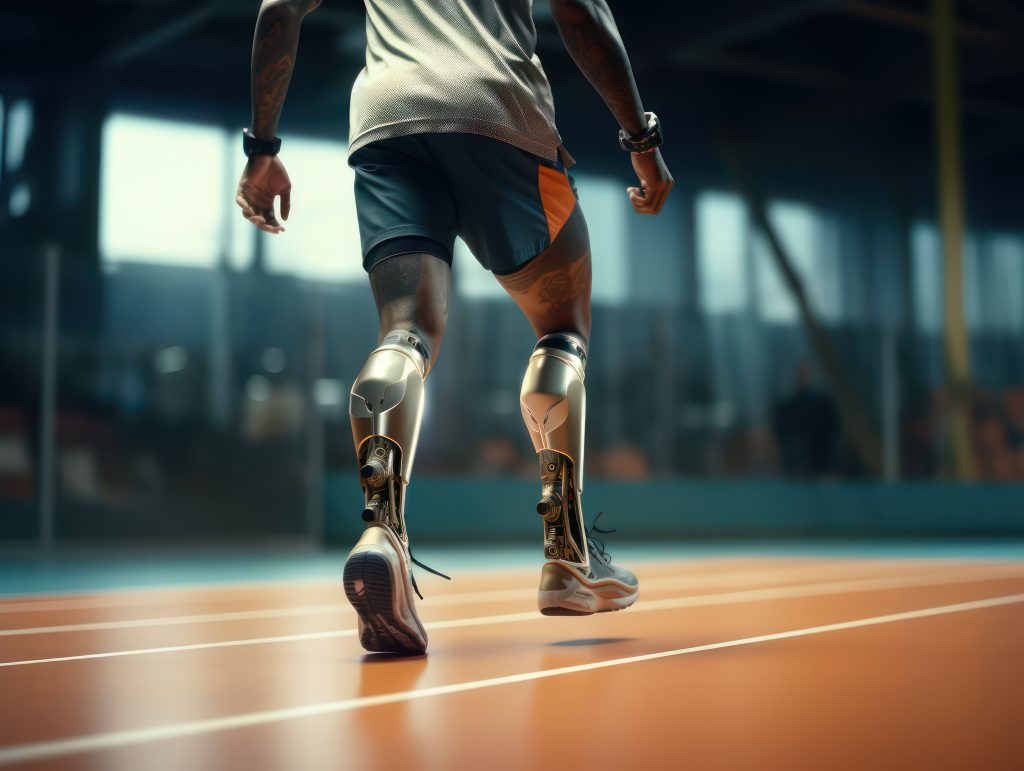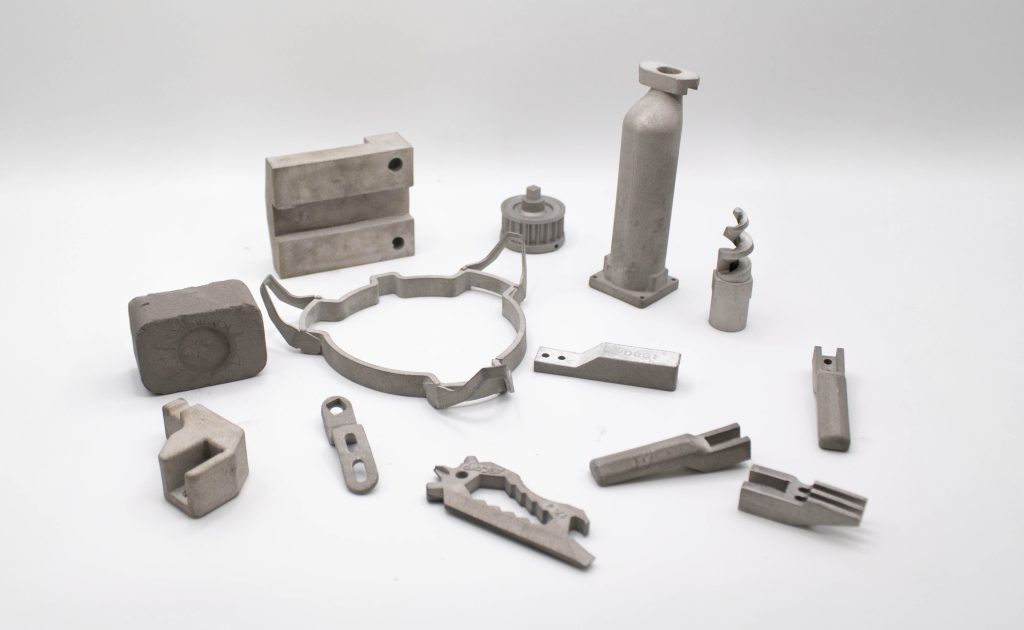As advanced technologies continue to reshape the world of manufacturing, metal 3D printing, also known as metal additive manufacturing (AM), has emerged as a transformative force. No longer limited to prototyping, metal 3D printing is now delivering production-ready parts across a wide range of high-demand industries.
At ABCorp3D, we’re playing a role in how this shift is enabling faster, smarter, and more sustainable manufacturing processes, especially in the automotive and orthotics and prosthetics (O&P) sectors.

Revolutionizing Automotive Manufacturing with Metal 3D Printing
In the competitive world of automotive manufacturing, innovation depends on performance, efficiency, and design freedom. Traditional methods like casting and machining often limit what’s possible due to complexity, cost, or time. With metal 3D printing, engineers can completely bypass these constraints by producing intricate and lightweight designs that not only elevate performance, but also reduce waste.
It’s critical to note that metal 3D printing isn’t just about building better parts, but rather, building smarter. By consolidating multiple components into a single, optimized structure, manufacturers reduce assembly time, eliminate failure points, and streamline the supply chain. These efficiencies translate into shorter lead times, lower costs, and—arguably most importantly—the flexibility to produce parts on demand.
A prime example comes from Bugatti, which uses 3D printing technology to manufacture titanium brake calipers, achieving a 40% weight reduction without compromising their structural integrity. Similarly, Porsche developed 3D-printed engine gearboxes that were 10% lighter than their forged counterparts, contributing to improved combustion efficiency and engine performance. Formula 1 engineers are even using 3D printing to produce topology-optimized chassis components, offering them the ability to reduce weight without compromising strength.
While these luxury brands have adopted 3D printing for performance and efficiency, boutique automotive manufacturers turn to 3D printing for shorter runs and more cost-effective production. 3D printing avoids minimum orders that smaller automotive manufacturers struggle to meet, all while still providing high quality, custom parts.
For automotive manufacturers facing pressure to innovate quickly while also minimizing their inventory, metal 3D printing presents quite a powerful and revolutionizing advantage. Prototypes can be designed, tested, and refined in days rather than weeks, accelerating development cycles. Custom tooling—such as jigs, fixtures, and molds—can be produced rapidly, streamlining the transition to production. Finally, lightweight, complex performance parts can be manufactured on demand at scale while meeting the stringent standards of high-performance vehicles.
Customized Care in Orthotics and Prosthetics with Metal Additive Manufacturing
While speed and efficiency (quite literally) drive the automotive sector, personalized precision is the cornerstone of modern orthotics and prosthetics manufacturing. Here, metal 3D printing is enabling practitioners to design and produce devices that are tailored to each patient’s unique anatomy.
By starting with a digital scan of the patient’s limb, clinicians can design custom prosthetics or orthotic devices with exacting detail. The result is a better-fitting, more comfortable product that improves mobility and quality of life. These devices often incorporate lightweight lattice structures that mimic natural bone while maintaining strength and durability, which is something traditional manufacturing methods often struggle to achieve.

For individuals with limb differences, the size and shape of residual limbs often change over time—affected by factors like age, weather, and activity level. As a result, even a custom-fitted prosthetic can become too tight or too loose, leading to discomfort, painful pressure on scar tissue, and a range of skin issues. This is where the speed of 3D metal printing becomes crucial, enabling rapid adaptation or replacement of full prosthetics or components to ensure a better fit, improved comfort, and consistent functionality as the user’s body changes.
The ability to produce complex internal geometries also allows for improved ventilation, reduced weight, and better pressure distribution—all of which are absolutely critical to patient satisfaction and mental health. As previously stated, metal 3D printing dramatically reduces the turnaround time. What once took weeks can now be completed in days, allowing patients to receive their devices sooner and practitioners to respond quickly to changes in their condition.
From custom-fit prosthetic sockets to durable titanium orthotic frames, 3D printing in O&P is setting a new standard for personalized medical care.
Sustainable and Cost-Effective Manufacturing
One of the less talked-about but equally important benefits of metal 3D printing is its alignment with sustainable manufacturing practices. More traditional subtractive methods are notorious for generating a substantial amount of material waste, as any excess material is cut away (subtracted) to form the final shape. In contrast, 3D printing (additive) builds parts layer by layer, using only the amount of material required.
This innovative process not only reduces waste but also leads to cost savings, especially when working with expensive metals like 17-4 PH or 316L stainless steel. Additionally, by consolidating multiple components into a single printed part, manufacturers can simplify the production process, lower their energy consumption, and reduce their labor and inspection costs.
Compared to energy-intensive processes like forging and casting, metal 3D printing can significantly lower the carbon footprint of a manufacturing operation. For industries that are striving to meet environmental regulations and reduce emissions, this technology supports both sustainability goals and long-term profitability.
ABCorp 3D: Your Partner in Metal Additive Manufacturing
At ABCorp 3D, we’re proud to lead the way in advanced 3D printing solutions. Our expertise in metal additive manufacturing helps companies across industries streamline production, accelerate innovation, and unlock new possibilities when it comes to design and functionality.
From precision automotive parts to life-changing prosthetic components, we offer end-to-end support—including design consultation, material selection, production, and post-processing. We work closely with our clients to ensure every part meets the rigorous standards of modern manufacturing while pushing the boundaries of what’s possible with 3D printing.

Whether your goal is to reduce lead times, improve part performance, or embrace a more sustainable production model, our team is here to help you achieve it. With state-of-the-art metal 3D printing capabilities and premium materials like 17-4 PH and 316L stainless steel, we’re delivering scalable solutions for a more agile, innovative future.
Looking Ahead: The Future of Metal 3D Printing
Metal 3D printing in manufacturing is not a fleeting trend, but rather a fundamental shift in how products are designed, engineered, and delivered. From automotive innovation to custom prosthetic fabrication, this technology is delivering measurable value across the board.
As more industries adopt additive manufacturing, we expect to see even greater integration into mainstream production workflows. At ABCorp 3D, we’re committed to staying ahead of the curve, investing in new technologies and processes that allow our customers to lead in their respective markets.
By embracing metal 3D printing, manufacturers can achieve not only faster production and improved performance, but also greater resilience, flexibility, and environmental responsibility. In short, it’s a better way to build—and it’s here to stay.
